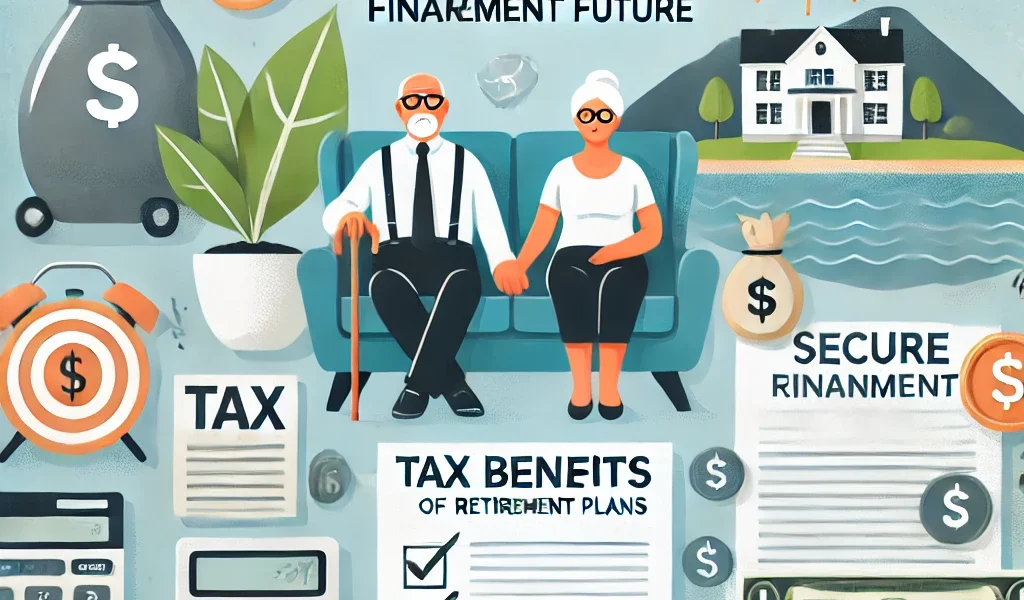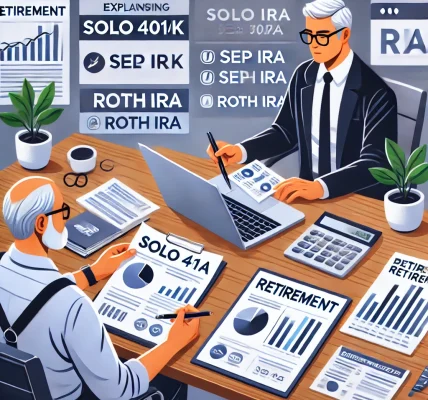Introduction
Retirement planning is a critical financial goal that requires foresight and strategic planning. For self-employed individuals, building a retirement corpus is even more crucial as they do not have access to employer-sponsored retirement plans, such as 401(k)s or pensions. Instead, they must take full responsibility for securing their financial future.
Having a well-thought-out retirement savings strategy ensures that you can maintain your lifestyle, cover medical expenses, and enjoy a stress-free retirement. In this article, we will explore the most effective and legally safe ways to build a robust retirement corpus while minimizing tax liabilities and maximizing savings potential.
Step 1: Determine Your Retirement Goals
The first step in building a strong retirement corpus is understanding your financial needs and lifestyle aspirations. Consider the following:
- At what age do you plan to retire?
- How much do you need for daily expenses?
- What are your healthcare needs?
- Do you have dependents who rely on you financially?
- Do you plan to travel or pursue expensive hobbies?
One commonly used rule for estimating your required retirement corpus is the 4% Rule, which suggests withdrawing only 4% of your savings annually to ensure financial stability over the years.
Step 2: Calculate Your Retirement Corpus
To plan effectively, you need to estimate how much you should save. Consider the following factors:
- Current Monthly Expenses: Assess both essential (housing, food, utilities) and discretionary (travel, entertainment) expenses.
- Inflation Rate: Assume an annual inflation rate of 6-7% when calculating your future needs.
- Projected Retirement Age: The earlier you retire, the longer your savings need to last.
- Expected Lifespan: Plan for at least 25-30 years of post-retirement expenses.
Formula to Calculate Retirement Corpus:
Retirement Corpus Needed = Yearly Expenses × (1 + Inflation Rate) ^ Number of Years in Retirement
Example: If your estimated yearly expenses in today’s terms are $40,000, and you expect to live 25 years post-retirement, your required corpus would be:
This means you should aim for a retirement corpus of around $1.71 million to ensure financial security in your retirement years.
Step 3: Explore the Best Retirement Savings Options for Self-Employed Individuals
1. Solo 401(k) – Best for High Earners
A Solo 401(k) plan is a great option for self-employed individuals with no employees.
- Maximum contribution (2024): $69,000 ($76,500 for age 50+ with catch-up contributions)
- Offers pre-tax (traditional) or Roth (after-tax) contributions
- Option for higher employer contributions based on business income
- Potential for tax-deductible contributions
2. SEP IRA (Simplified Employee Pension Plan)
A SEP IRA is ideal for self-employed individuals and small business owners.
- Contribution limit (2024): 25% of net earnings, up to $69,000.
- No employee contributions – employer funds the entire account.
- Tax-deductible contributions reduce taxable income.
- Easy setup and administration.
3. SIMPLE IRA (Savings Incentive Match Plan for Employees)
A good choice for self-employed professionals with employees.
- Contributions up to $16,000 per year ($19,500 for age 50+ in 2024).
- Employers must contribute either 2% of salary or match employee contributions up to 3%.
- Lower administrative costs than a 401(k) plan.
4. Roth IRA & Traditional IRA
- Maximum contribution of $7,000 in 2024 ($8,000 for age 50+).
- Roth IRA: Tax-free withdrawals in retirement.
- Traditional IRA: Tax-deferred growth, with tax-deductible contributions.
Step 5: Diversify Your Investments
Having a mix of investment options reduces risk and maximizes returns. Consider:
- Stocks and Mutual Funds: Growth potential but involves market risk.
- Bonds: More stable, providing fixed returns.
- Real Estate Investments: Rental properties can provide passive income.
- Index Funds & ETFs: Offer diversification with minimal management.
Step 6: Automate Your Savings
Self-employed individuals must develop self-discipline in saving. Automate your contributions to retirement accounts to ensure you consistently set money aside without the temptation to spend it elsewhere.
Setting up an automatic contribution plan through your bank or investment account ensures that you consistently build your retirement fund without the temptation to skip deposits. Consider setting up direct deposits to your retirement accounts at regular intervals, such as monthly or quarterly.
Step 7: Minimize Taxes and Optimize Investments
Self-employed individuals can take advantage of various tax deductions and credits to optimize their retirement savings. Some of these strategies include:
- Maximize Retirement Contributions: Contribute as much as possible to tax-advantaged retirement accounts to reduce taxable income.
- Diversify Investments: Spread your investments across different asset classes to manage risk effectively.
- Consider Tax-Deferred Plans: Options like SEP IRAs and Solo 401(k)s offer tax benefits that can help your savings grow faster.
- Set Up a Health Savings Account (HSA): If eligible, contributing to an HSA allows you to save for future medical expenses tax-free.
- Tax-Efficient Withdrawals: Withdraw funds in a manner that minimizes taxes, such as using Roth IRAs for tax-free distributions.
Step 7: Consider Alternative Income Streams
For self-employed individuals, it is essential to diversify income sources to protect against economic downturns. Consider the following options:
- Real Estate Investments: Rental properties can provide a steady stream of passive income during retirement.
- Dividend Stocks: Investing in dividend-paying stocks can provide additional passive income.
- Annuities: These provide a guaranteed income stream during retirement, which can be a useful supplement to savings.
- Side Businesses or Passive Income Streams: Consider creating digital products, writing eBooks, or investing in peer-to-peer lending opportunities.
Step 7: Regularly Review and Adjust Your Plan
Market fluctuations, business performance, inflation, and personal circumstances will change over time. As a result, your retirement plan should be flexible. Consider:
- Reviewing your portfolio annually to ensure alignment with financial goals.
- Adjusting your investment mix as you get closer to retirement.
- Rebalancing your portfolio to ensure risk diversification.
- Updating your financial plan to reflect life changes such as marriage, business expansion, or economic downturns.
Step 8: Consider Professional Financial Advice
Since retirement planning for self-employed individuals can be complex, working with a financial advisor can be beneficial. A financial expert can help:
- Develop a customized retirement strategy.
- Identify tax-saving investment options.
- Optimize retirement savings by selecting the best retirement accounts.
- Provide a long-term vision for financial stability in retirement.
Top Mistakes to Avoid:
- Not Starting Early Enough – The sooner you start, the more you benefit from compound interest.
- Relying Solely on Business Income: Your business might not always be a reliable income source after retirement.
- Underestimating Healthcare Costs: Always factor in medical expenses when planning your savings goal.
- Not Having a Diversified Portfolio: Relying on just one investment option can be risky.
- Ignoring Inflation: Your money loses value over time, so plan for inflation-adjusted costs.
- Not Having a Withdrawal Plan: Be strategic about how much you withdraw post-retirement to make your savings last.
Conclusion
Being self-employed gives you the freedom to be your own boss, but it also requires taking full responsibility for your financial future. Start planning early, choose the right investment vehicles, and stay committed to your savings strategy. With discipline and proper financial planning, you can build a comfortable retirement corpus that ensures a stress-free and secure future.
Don’t wait—start saving for your retirement today! The earlier you begin, the more financial freedom you will enjoy in your golden years.




